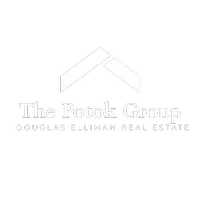
How to Transfer Your Property Tax Base in California After Age 55
For many homeowners in California, one of the biggest concerns when moving is the potential jump in property taxes. But if you’re 55 or older, there’s good news: thanks to Proposition 19, you may be able to transfer your property tax base to a new home — even if that home costs more than the one you

How July’s New “Beautiful Bill” Could Shape the Real Estate Market
In July, Governor Newsom signed into law the “Beautiful Bill,” a landmark piece of legislation aimed at revitalizing California communities by increasing housing options and streamlining zoning rules — all while preserving the aesthetic charm that defines neighborhoods across Orange County. Encourag

How the Stock Market Affects the Real Estate Market — Orange County Edition
When Wall Street gets jittery, Orange County real estate feels it. Whether you're looking at a view home in Newport Coast, an investment property in Anaheim, or a single-family in Tustin, the ups and downs of the stock market ripple through local housing decisions. Let’s break down how this financ
Categories
- All Blogs (16)
- 1031 Exchanges (1)
- Alternative Financing Solutions (1)
- Awards & Recognition (1)
- Beautiful Bill (1)
- Best Neighborhood in OC (4)
- Buyer & Seller Tips (2)
- Buying & Selling Strategies (3)
- California Real Estate (5)
- Client Success Stories (1)
- Closing Day Preparation (1)
- Downpayments (1)
- High-Net-Worth Borrowers (2)
- Home Buying and Selling (4)
- Home Buying Process (1)
- Home Buying Strategies (2)
- Home Buying Tips (4)
- Home Downpayment (1)
- Home Selling Tips (3)
- Housing Market Analysis (3)
- How Brokers Influence the Housing Market (1)
- Industry Standards & Ethics (1)
- Inflation and Economy (2)
- Inside The Potok Group (1)
- Key Players in a Real Estate Transaction (1)
- LA Fire (1)
- Local Real Estate Trends (6)
- Market Trends & Data (4)
- Market Trends from Top Agents (4)
- Mortgage & Lending Tips (1)
- Mortgage and Financing (1)
- Mortgage Insights (4)
- New Big Beautiful Bill (1)
- Orange County Approved Bill (2)
- Orange County Best Cities (2)
- Orange County Living (5)
- Orange County Neighborhoods (1)
- Orange County Real Estate (2)
- Questions to Ask Before Hiring an Agent (1)
- Real Estate Financing (1)
- Real Estate Investment (2)
- Real Estate Market (2)
- Real Estate Market Trends (1)
- Real Estate Market Updates (7)
- Real Estate Myths & Misconceptions (1)
- Real Estate Tips (2)
- Real Estate Tips & Insights (3)
- Realtor Education & Insights (2)
- Retirement Planning & Real Estate (2)
- Self-Employed & Entrepreneur Resources (1)
- Stock Market (1)
- The Importance of Representation (2)
- Tips for Choosing the Best Real Estate Agent (1)
- Wildfire Effect On Real Estate Market (1)
- Wildfires in CA (1)
- Working with Realtors (1)
Recent Posts











